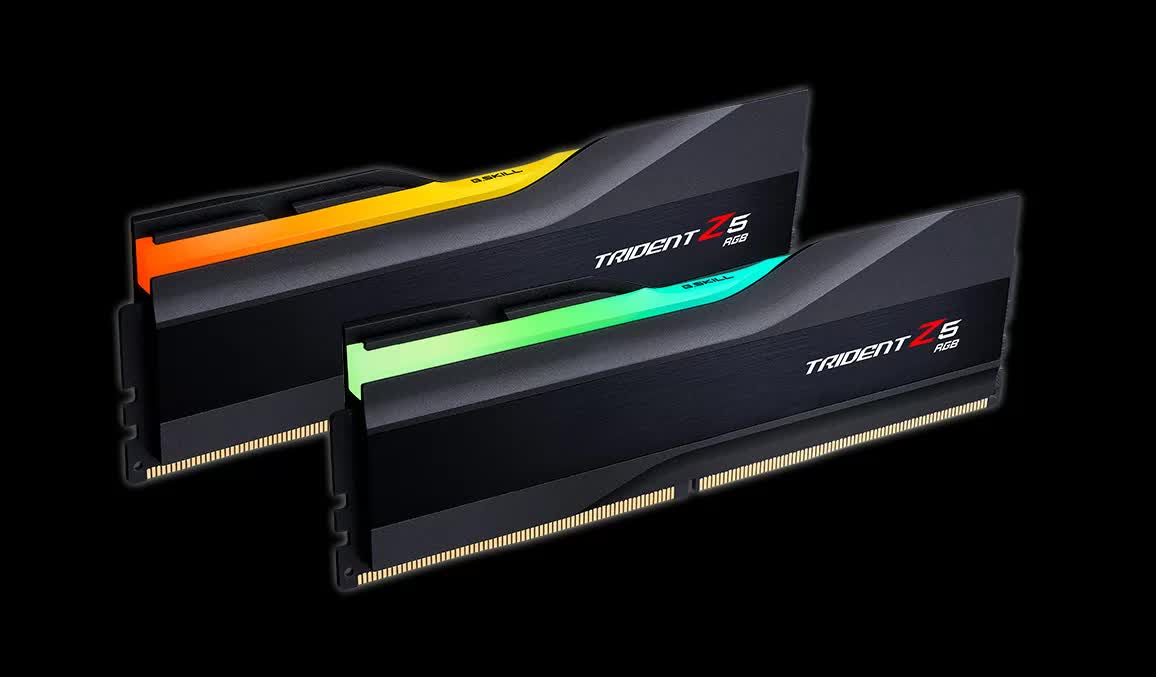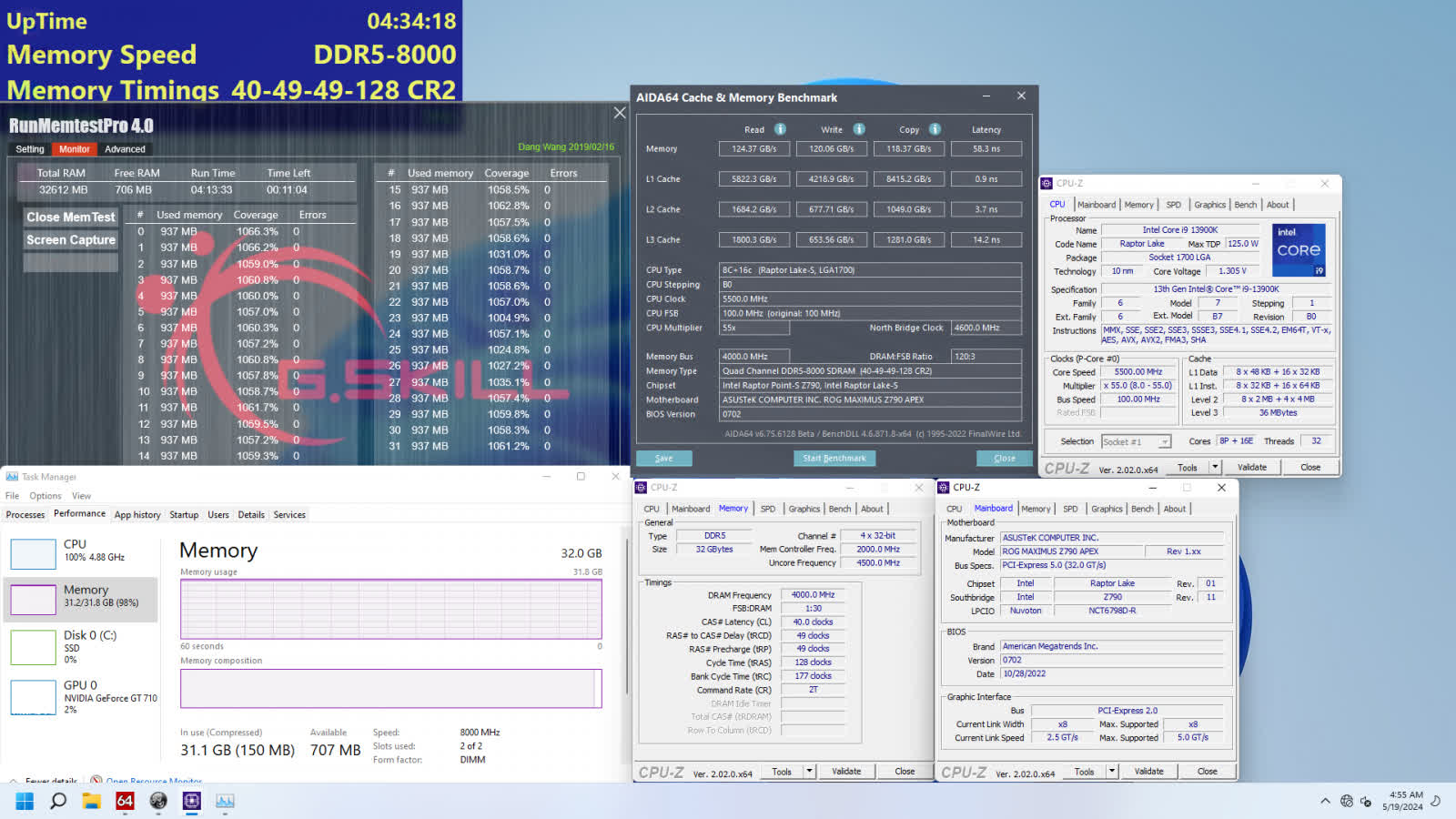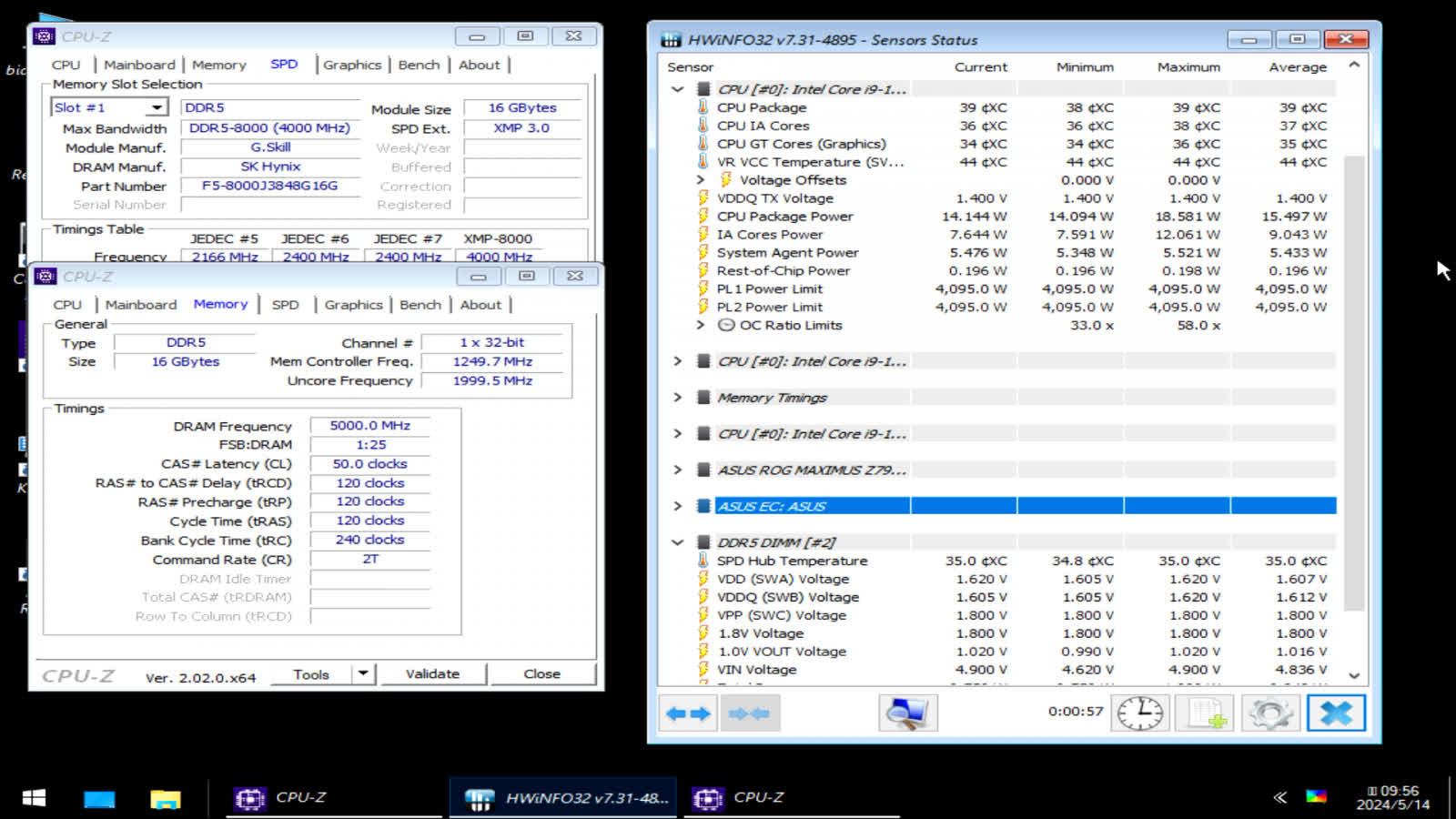Something to look forward to: G.Skill recently unveiled its DDR5-8000 Extreme Memory High-Bandwidth modules. The release also highlighted a joint effort by Asus and G.Skill that resulted in a blazing fast 10,000 MT/s overclock. The achievement, while impressive, required memory configurations that would be considered less than ideal for everyday use.

The press release provided information and screenshots showcasing G.Skill's new DDR5-8000 CL40 and DDR5-7800 CL38 kits. The modules were all paired with Intel's new 13900K on the Asus ROG Maximus Z790 Apex, which enabled the DDR5-8000 kit to achieve more than 124 GB/s read and 120 GB/s write speeds in AIDA64's memory benchmark.
In addition to the kits running at their rated XMP 3.0 speeds, the Asus and G.Skill team managed to overclock the DDR5-8000 kit to an impressive 10,000 MT/s without the use of exotic cooling. However, the settings required to achieve this speed are hardly suitable for everyday use.
The team was forced to run in single channel mode using only a single RAM module, and primary timings were set substantially higher than the standard two-module configuration on the 7800 and 8000 kits.
DDR5's initial rollout was far from lovingly accepted by the PC community. Early adopters who were lucky enough to even find a kit frequently encountered boot, stability, or other BIOS-related issues. Even today, many boards with four DIMM slots experience issues supporting DDR5 in a 4x16 configuration. Speeds and latency weren't viewed as overly advantageous when compared to mature DDR4 modules, and performance gains were often deemed minimal at best.
Modern DDR5 kits have started making the move from "optional upgrade" to "hardware requirement." While Intel's Alder Lake and new Raptor Lake platforms allow users to select DDR4 or DDR5 boards, AMD's recently launched 7000 series CPUs and x670 series motherboards require users to move to the new DDR5 standard.
DDR5 has already begun to mature along the same trajectory as previous versions of the DDR memory technology. As it continues to evolve and adoption rates grow, users moving to the new RAM platform will have the opportunity to take advantage of DDR5's higher bandwidth, lower power consumption, increased efficiency and scalability, and overall increase in performance.
https://www.techspot.com/news/96567-gskill-unveils-ddr5-8000-breaks-10000-mts-ceiling.html

